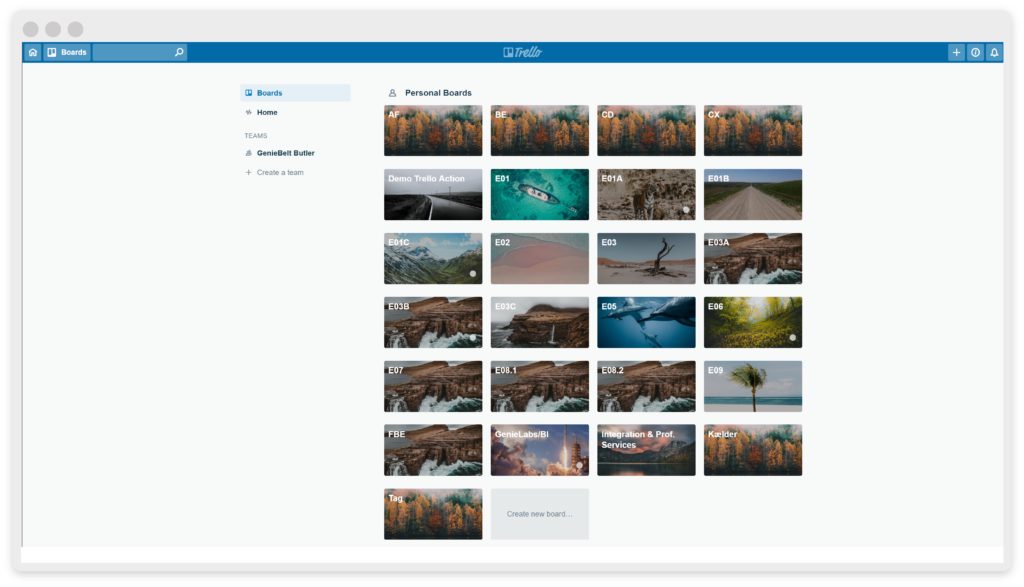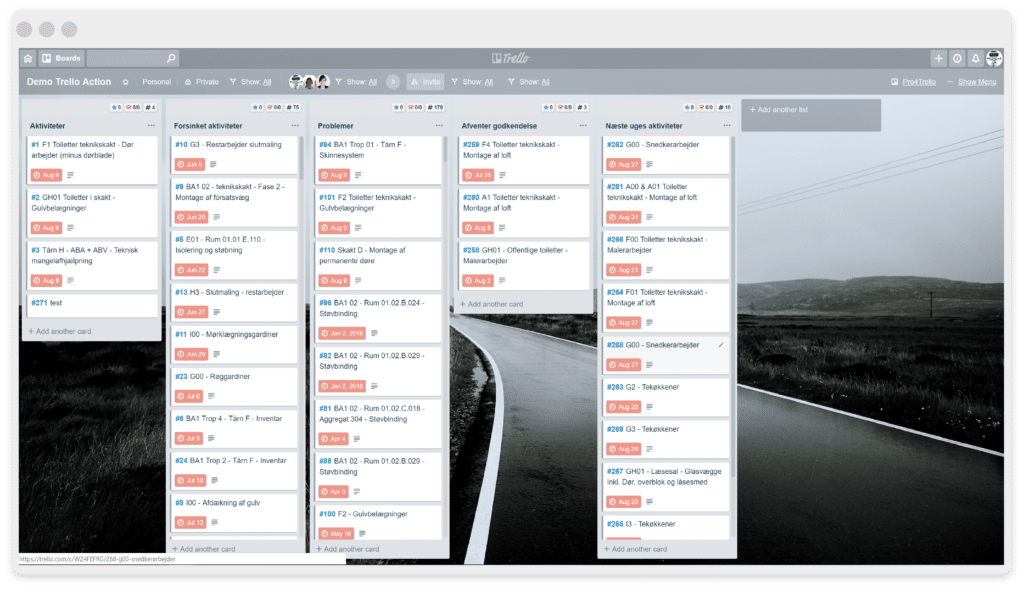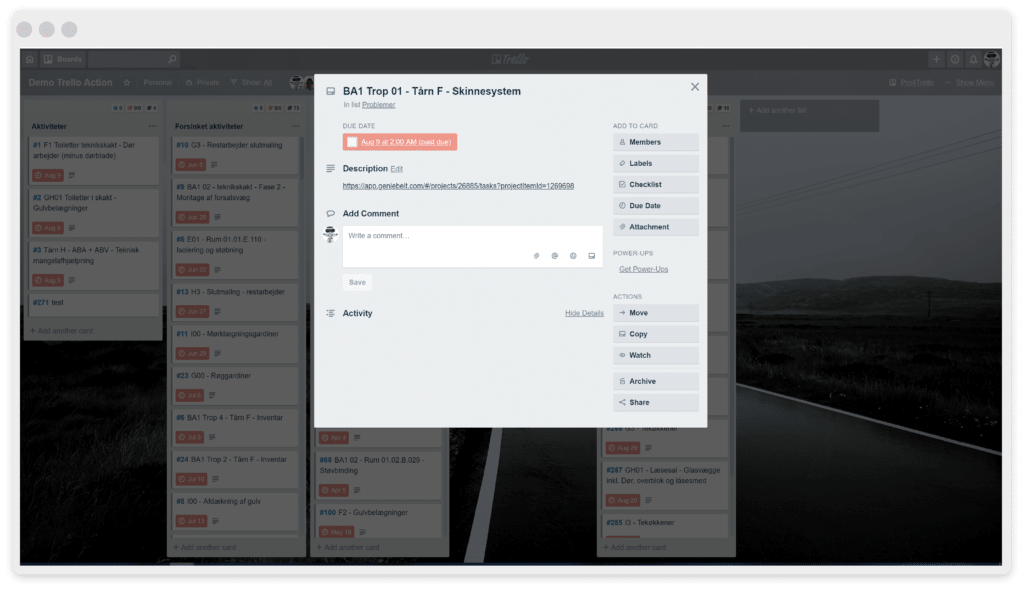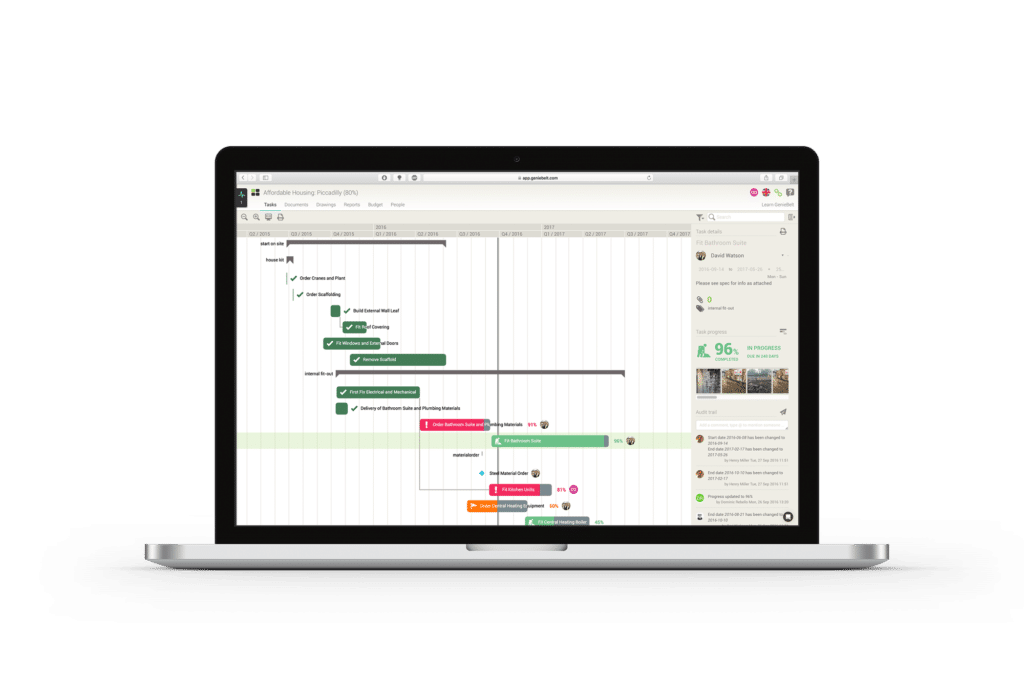The Niels Bohr Building (NBB) is a laboratory and educational structure of approximately 52,000 m2 area owned by the University of Copenhagen. The project of this magnitude is now managed by the Danish Road Directorate. Numerous tools are being used to bring order to the chaos that traditionally comes with large-scale commercial projects. One of them is LetsBuild and its effective integration with Trello.
How the project is set up in LetsBuild
Due to the size and complexity of the project, it has been broken down into different areas and floors in LetsBuild. Hence, the project is divided into multiple projects in LetsBuild, each representing a floor. The projects are not based on different subcontractors as the same teams work on different floors.
With this set-up in LetsBuild, it was easy to gain an overview of the progress on each floor. In order for the planner to get a full overview of the tasks of all teams working across floors (so, across LetsBuild projects), an added dimension was required.
What the planner needed
To save the project planner time accessing individual LetsBuild projects to get an overview of team progress on different tasks, LetsBuild worked with the NBB team to provide another dimension to the plan. In essence, the project planner needed the following information:
- All activities/tasks to be done on a particular date
- All tasks that were facing problems
- All activities that were delayed
- All completed tasks that were awaiting approval
- All upcoming activities of the next week
Trello and LetsBuild integration
In order to benefit from the data captured by LetsBuild, an integration with Trello turned out to be the solution. Trello’s interface is the perfect solution if you want to break activities into lists and cards. The important element was to find a way for it to work with LetsBuild and at the same time be able to tackle a project of this scope.
Read also: 10 tips for delivering construction projects on time and on budget
All tasks that belong to a specific subcontractor are marked with a tag in LetsBuild. The integration works by going through all NBB projects in LetsBuildand picking up the tasks that are tagged to a specific subcontractor. The information is then represented in the form of lists and cards in Trello. Now, the planner can view all relevant information on the subcontractor tasks across projects in real time.

In LetsBuild, the tasks also have other tags such as “due date”, “delayed”, “problem”, “verified” and more. This information is automatically updated and sorted in Trello in the form of lists. The figure below shows tasks that have a due date, are facing problems, have delays, etc.

Each card represents a task in LetsBuild. Based on the tag, it can be in any of the lists and can appear more than once in different lists. For example, a task can have a problem and also be delayed, in which case it will appear twice in two different lists.

Every card has a link to the specific task in LetsBuild so that further, more detailed information can be viewed just by clicking the link.
 This integration with Trello is yet another example of how LetsBuild works as an extension to numerous construction tools in order to bring efficiency and simplicity to construction projects. Interested in knowing more about LetsBuild integrations? Read more here.
This integration with Trello is yet another example of how LetsBuild works as an extension to numerous construction tools in order to bring efficiency and simplicity to construction projects. Interested in knowing more about LetsBuild integrations? Read more here.




